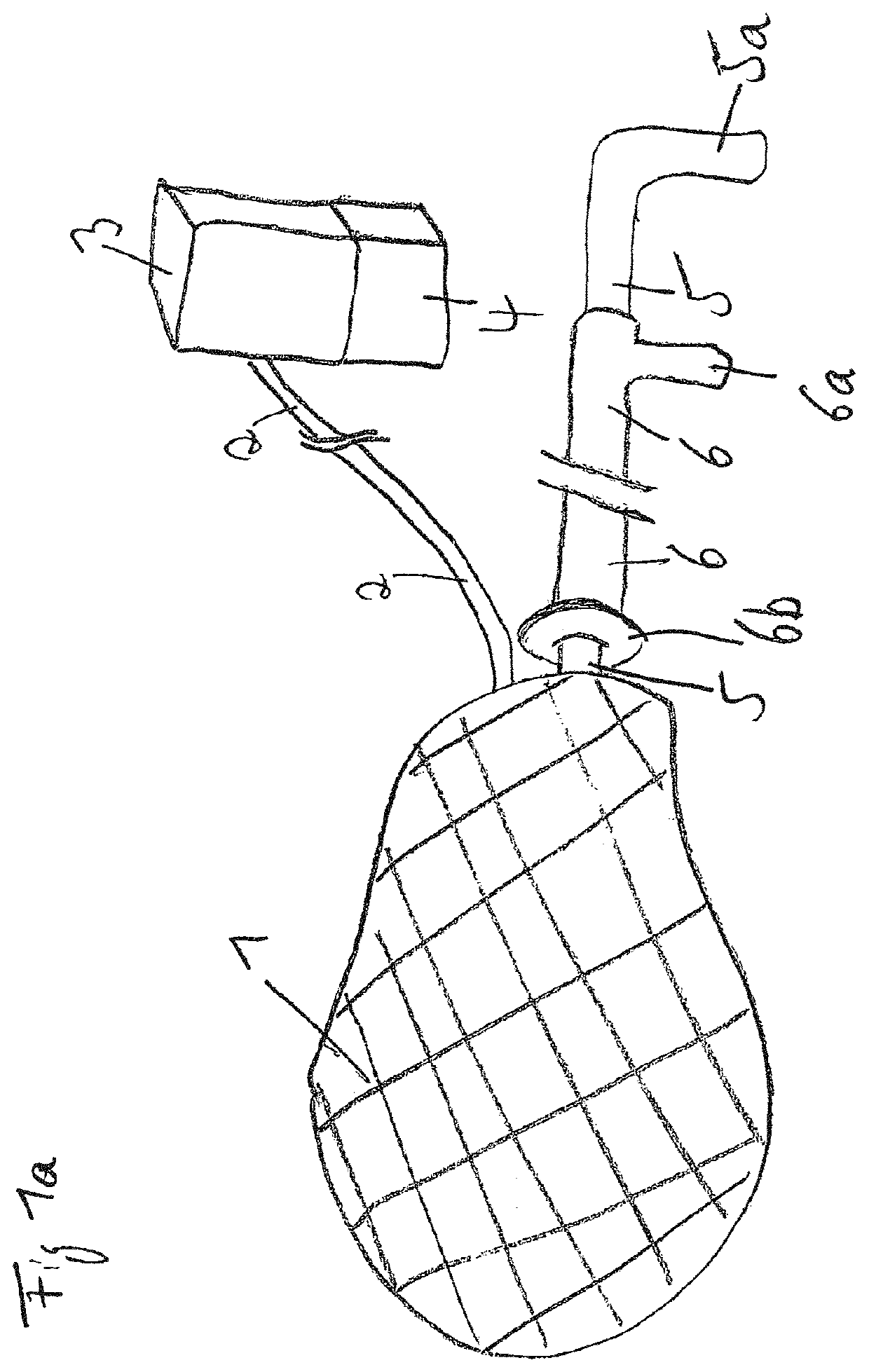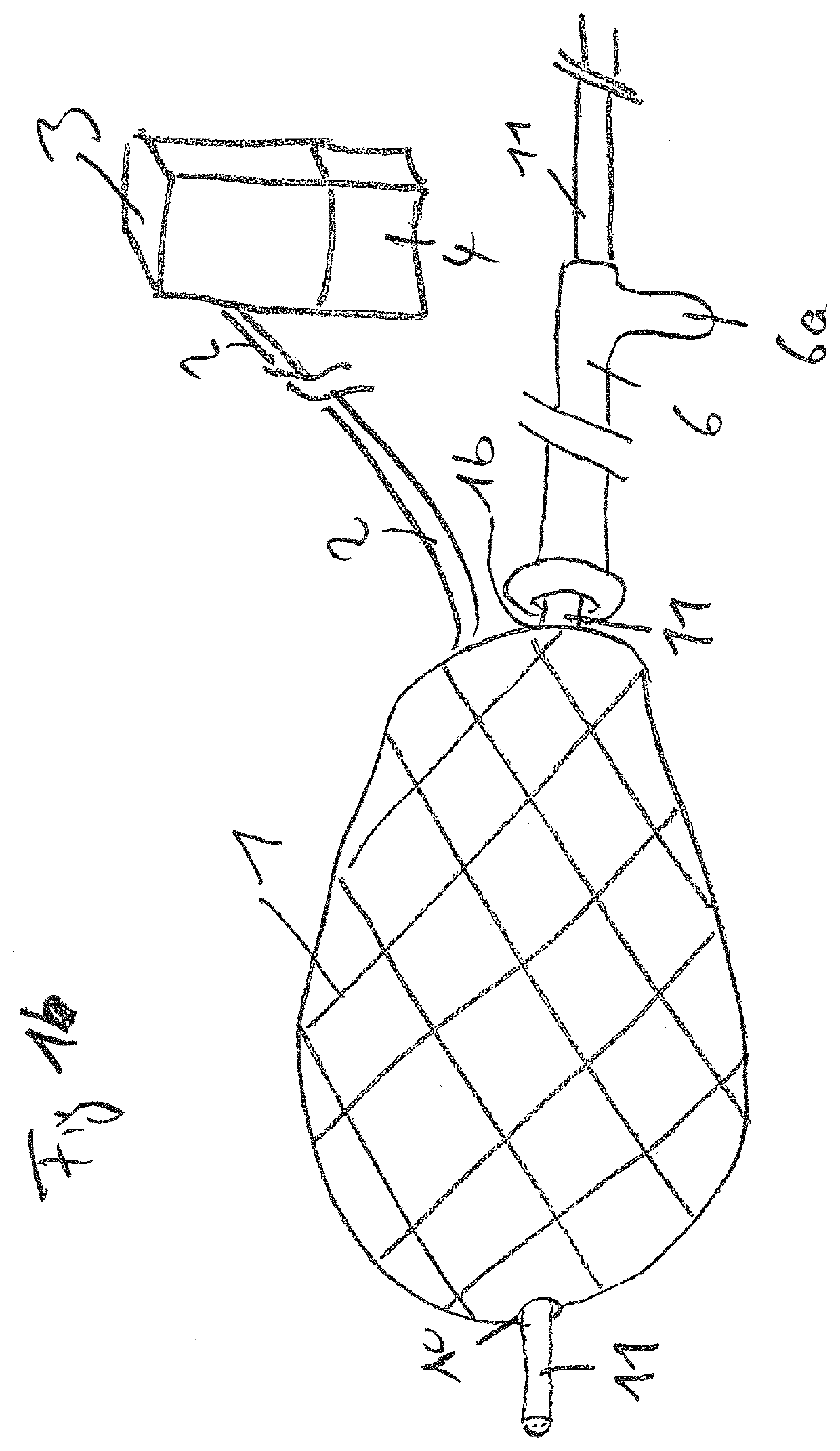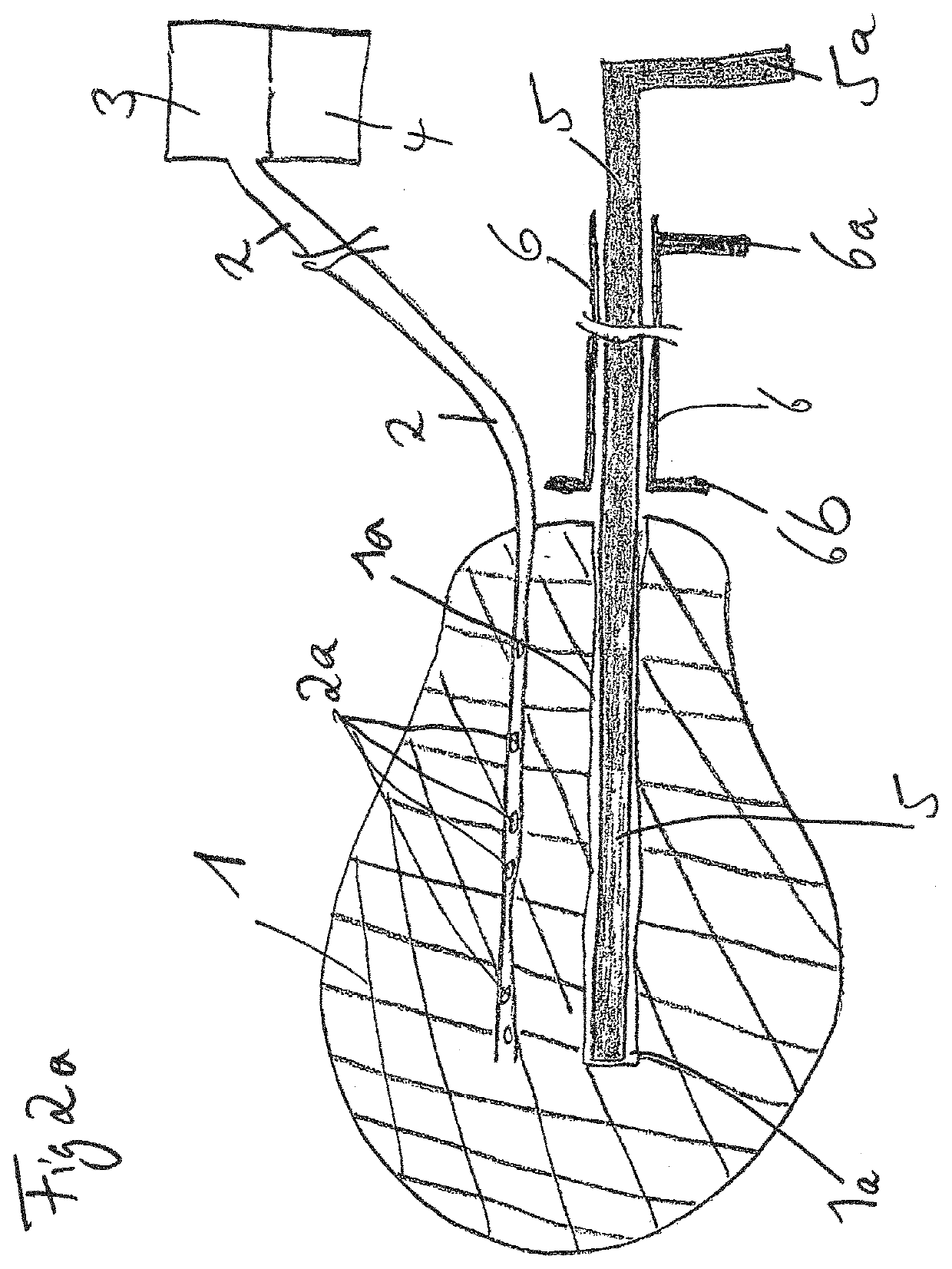Drainage system and vacuum pump for intrauterine vacuum therapy
a vacuum pump and drainage system technology, applied in the field of drainage system and vacuum pump for intrauterine vacuum therapy, can solve the problem of no special vacuum bandage system or drain, and achieve the effect of reducing the risk of perforation of the uterus during the advance of the fluid-collecting elemen
- Summary
- Abstract
- Description
- Claims
- Application Information
AI Technical Summary
Benefits of technology
Problems solved by technology
Method used
Image
Examples
Embodiment Construction
[0074]Hereinafter, the invention is explained based on figures, which illustrate embodiments.
[0075]FIG. 1a is a top view of fluid-collecting element (1) in a merely suggested pear-shape. It is fluid-conductively connected to a tubular fluid-communicating element (2), which is fluid-conductively connected to a secretion collection vessel (3) having a vacuum generating pump (4). Into the collection element (1), a guide-rod (5) with handle (5a) is introduced, which is situated in a sheath (6) that is movable on it, the latter is also at the proximal end with a grip (6a) and ends at the distal end in a disc-like plate (6b) for pushing the fluid-collecting element (1) forward.
[0076]FIG. 1b, like Figure, 1 is a top view of fluid-collecting element (1) in a merely suggested pear shape. It is fluid-conductively connected to a tubular fluid-communicating element (2), which is fluid-conductively connected to a secretion collection vessel (3) having a vacuum-generating pump (4). In collection ...
PUM
 Login to View More
Login to View More Abstract
Description
Claims
Application Information
 Login to View More
Login to View More - R&D
- Intellectual Property
- Life Sciences
- Materials
- Tech Scout
- Unparalleled Data Quality
- Higher Quality Content
- 60% Fewer Hallucinations
Browse by: Latest US Patents, China's latest patents, Technical Efficacy Thesaurus, Application Domain, Technology Topic, Popular Technical Reports.
© 2025 PatSnap. All rights reserved.Legal|Privacy policy|Modern Slavery Act Transparency Statement|Sitemap|About US| Contact US: help@patsnap.com



